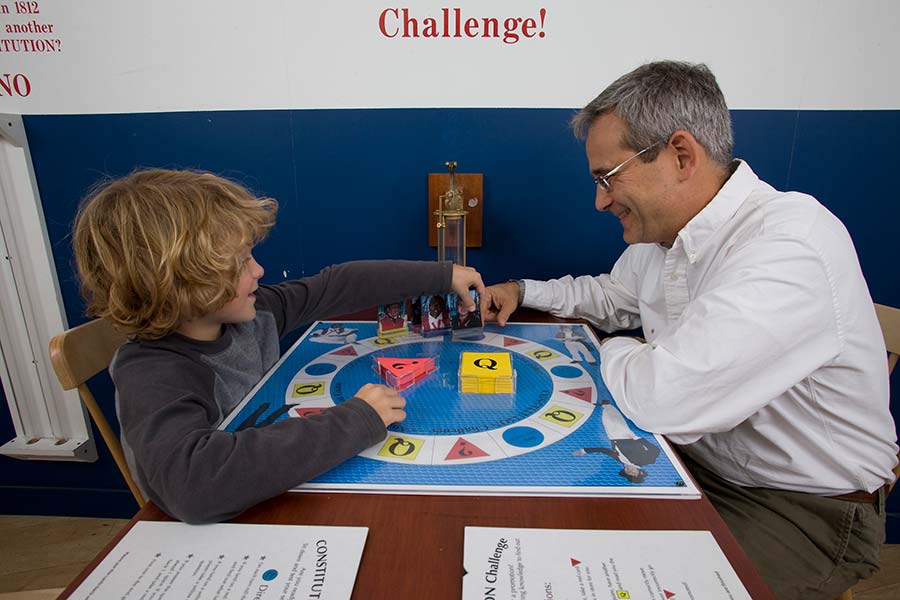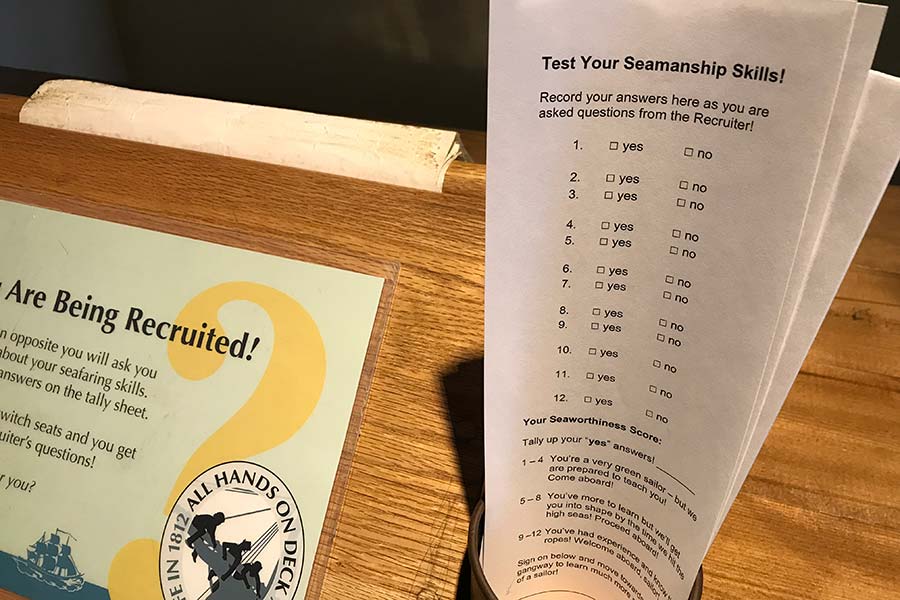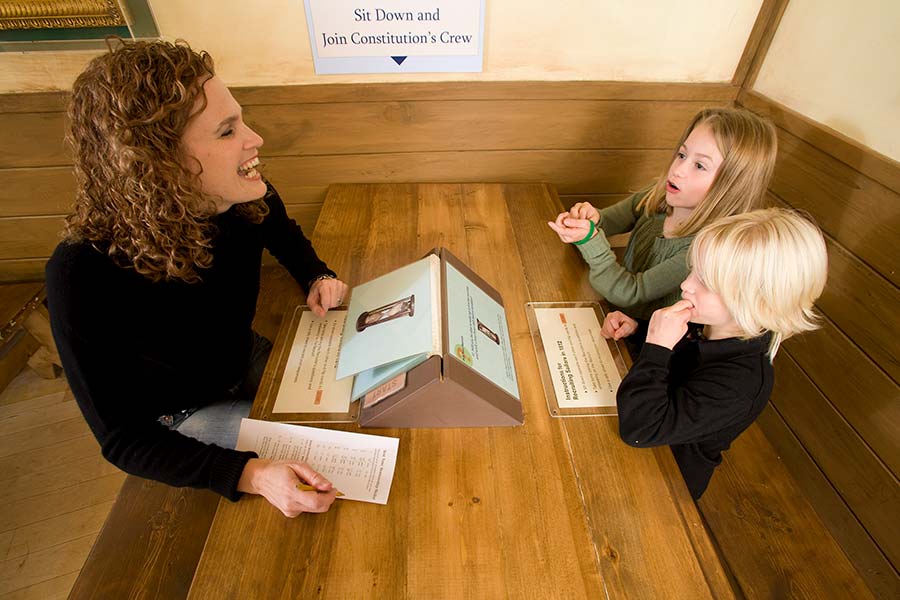Why it is Important
Building choice into programs and exhibits encourages conversation and family agency. Experiences that give families a choice allow them to engage with content and one another.
Marianna Adams explains the benefits to a multi-outcome activity:
Put it into Practice
Some content may be fixed, but activities that engage with this content- such as games and group challenges- can be multi-outcome. Binary “yes or no” and “right or wrong” activities limit engagement and active discovery. Instead, encourage trial and error, problem solving, and exploration by designing an exhibit or program that includes choice and allows for many outcomes.
Incorporate Group Challenges
Collaborative challenges that allow families to work together, solve problems, communicate with each other, and share their successes are great opportunities for family bonding and learning. In the USS Constitution Museum’s Built to Win program, families work together to engineer and build a boat, test, revise, and test again until they succeed. Families work as design teams to choose their materials, load their ship with cannon (pennies), and see how fast it can sail.

One of the successes of this problem-solving program is that the challenge can be solved in many ways. In fact, the more open-ended choice we designed into the program, the longer families stayed and the more they engaged in the activity. When we first prototyped our boat-building program, everyone received the same type and amount of supplies in order to build their model boats. Adding the Shipyard Supply Shop (see photo) and a spending budget increased opportunities for groups to strategize together and discuss how to spend their limited funds.

(RIGHT) The Shipyard Supply Shop. Each group has $30 to spend on material for their ship’s hull and sails.
Try a Game
Board games are a familiar form that can take advantage of successful pre-visit family interactions. They offer seating, a welcome rest within a museum visit. And through a roll of the dice, games also highlight the role of choice and chance in determining the final outcome. Participants will get different information and results depending on how they choose to play each round of the game. Games can be used as a summary element, to review content presented in the exhibition. They are an effective, engaging, and inexpensive way to have families laugh and learn together.

Our recruiting activity is another example of a multi-outcome game-like element. Even though it is a linear activity, the result (your ranking entering USS Constitution’s crew) depends upon how you answer the questions asked. This multi-outcome ending is something that visitors asked for during exhibit prototyping.

